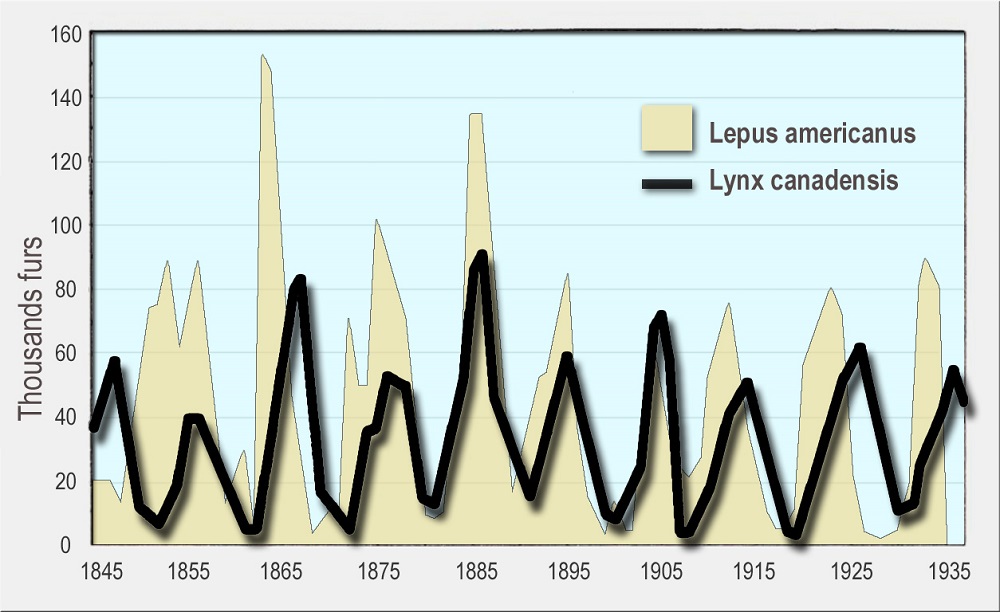[LS2-6] Ecosystem Equilibrium
This standard focuses on how to evaluate evidence showing that ecosystems tend to remain consistent in stable conditions, but can change quickly and drastically when things become unstable.
Resources for this Standard:
Here’s the Actual Standard:
Evaluate claims, evidence, and reasoning that the complex interactions in ecosystems maintain relatively consistent numbers and types of organisms in stable conditions, but changing conditions may result in a new ecosystem.
Standard Breakdown
This standard discusses ecosystems under two types of conditions.
Stable Conditions
During stable conditions, the inputs to the lowest levels of the food web remain consistent. Since all other life is based on the output of primary consumers, entire ecosystems tend to stay relatively stable as long as conditions remain the same. This concept can be seen through several biological concepts.
With predator-prey dynamics, we can see exactly how populations of predators and prey organisms keep each other in check. For example, check out how populations of Lynx and Snowshoe Hares respond to each other:

The predator populations (Lynx, in this case) tend to mirror the prey population in a delayed reaction. The reasoning runs that as prey populations increase, the predators have higher access to food and increase their reproduction. However, this increases the predator population, driving the prey population to new lows. In a stable environment, these two groups continue to drive the other up and down continuously. Note that the graph above denotes 100 years of continual cycling.
However, the idea of cyclical population dynamics can also be extended to the entire ecosystem. Carrying capacity – or the total number of organisms an ecosystem can sustain – essentially works in very similar ways. As animals exceed their carrying capacity, the population is diminished below capacity. The population bounces back, and the cycle continues in relative stability.
Changing Conditions
While humans have only been looking at these “stable” conditions for a few hundred years, we know from the fossil record that drastic changes can occur very quickly. There are several biological processes that show how drastic changes can completely change an ecosystem.
One relatively simple “major change” is the loss of apex predators. This phenomenon of the “trophic cascade” has been documented in many ecosystems, from coral reefs to evergreen forests. This concept can be shown easily, using hunting as an example. Hunters have decimated wolf populations, which has allowed deer populations to grow out of check. As a consequence, the deer are eating many saplings and small plants – leading to drastic changes in the composition of plants in their environment.
Bigger ecological disasters – from volcanoes to the plastic crisis – are going to affect many different trophic levels all at once. These massive disruptions in everything from sunlight to freshwater lead to completely different, and often less-productive, ecosystems to emerge.
A little clarification:
The standard contains this clarification statement:
Examples of changes in ecosystem conditions could include modest biological or physical changes, such as moderate hunting or a seasonal flood; and extreme changes, such as volcanic eruption or sea-level rise.
Let’s look at this clarification a little closer:
Modest Biological or Physical Changes
In our modern, globally-connected world, examples of modest to extreme biological and physical changes are everywhere. Plastics have been found in crustaceans at the bottom of the ocean, agricultural runoff is creating deadly algal blooms around the globe, and global warming is driving climate change – bringing massive environmental changes to many parts of the planet.
Many of these changes may become extreme changes, completely changing the entire biosphere. Using fossil evidence and data from glaciers, for example, we can predict what the world will look like when all the glaciers have melted and how high sea levels may rise. This not only shows how ecosystems change, but it can be tied into the larger problems humans will face as global coastlines recede.
